Key takeaways:
- Understanding cerebral palsy support involves recognizing the emotional and physical challenges faced by individuals and fostering inclusive environments.
- Accessibility is crucial for independence and community engagement, with small changes having a significant impact on individuals’ daily lives.
- Common accessibility barriers include poorly designed websites, lack of mobile optimization, and inadequate alternative text for images, highlighting the need for inclusive design practices.
- Sharing personal experiences and advocating for resources can empower individuals with disabilities, fostering community support and promoting systemic change.
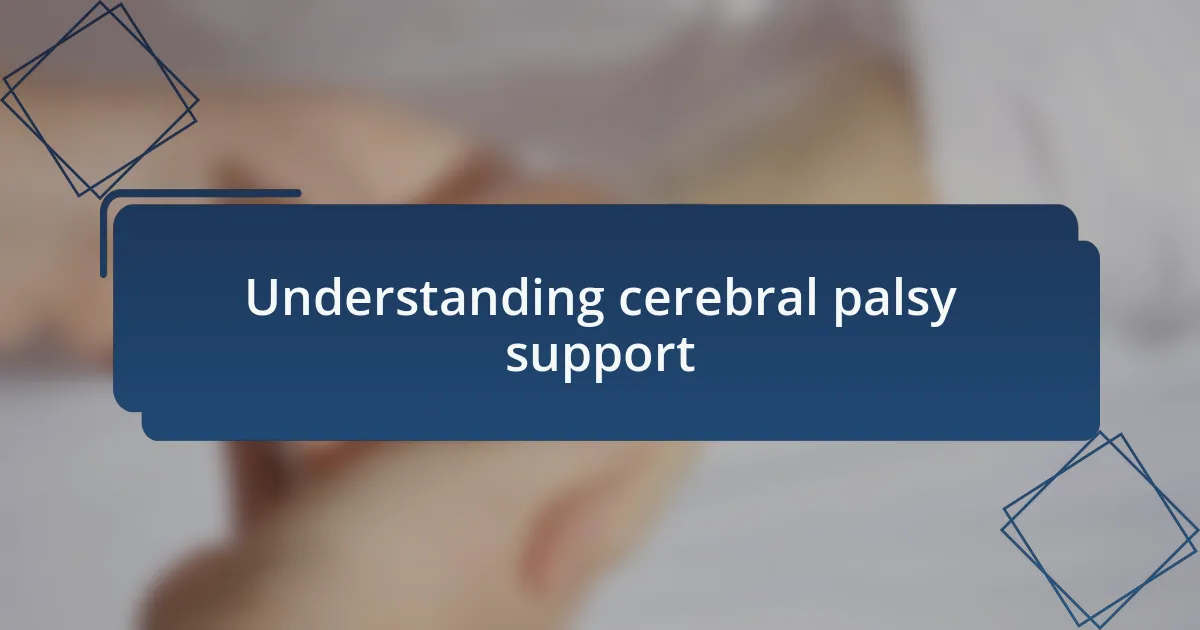
Understanding cerebral palsy support
Understanding cerebral palsy support is not just about knowing the available resources; it’s about recognizing the unique challenges individuals with this condition face every day. I remember meeting a young girl at a support group who expressed feeling like an outsider due to her mobility challenges. It struck me how vital it is for us to foster an environment where everyone feels included and understood.
The range of support can vary significantly, from physical therapy to emotional support networks. For instance, I once attended a workshop that encouraged families to share their experiences, and it was incredible to see how a simple conversation could lift spirits and build community. Have you ever thought about how essential it is for people to connect on these levels? It’s the heartwarming moments within these discussions that often lead to profound understanding and support.
Moreover, navigating the systems designed to assist can sometimes feel overwhelming. I’ve heard countless stories of families struggling with care plans and insurance, which can add stress to their already demanding lives. It makes me wonder, how can we better streamline these processes to truly serve those in need? In my experience, empowerment through knowledge and community is key to making meaningful progress in this journey.
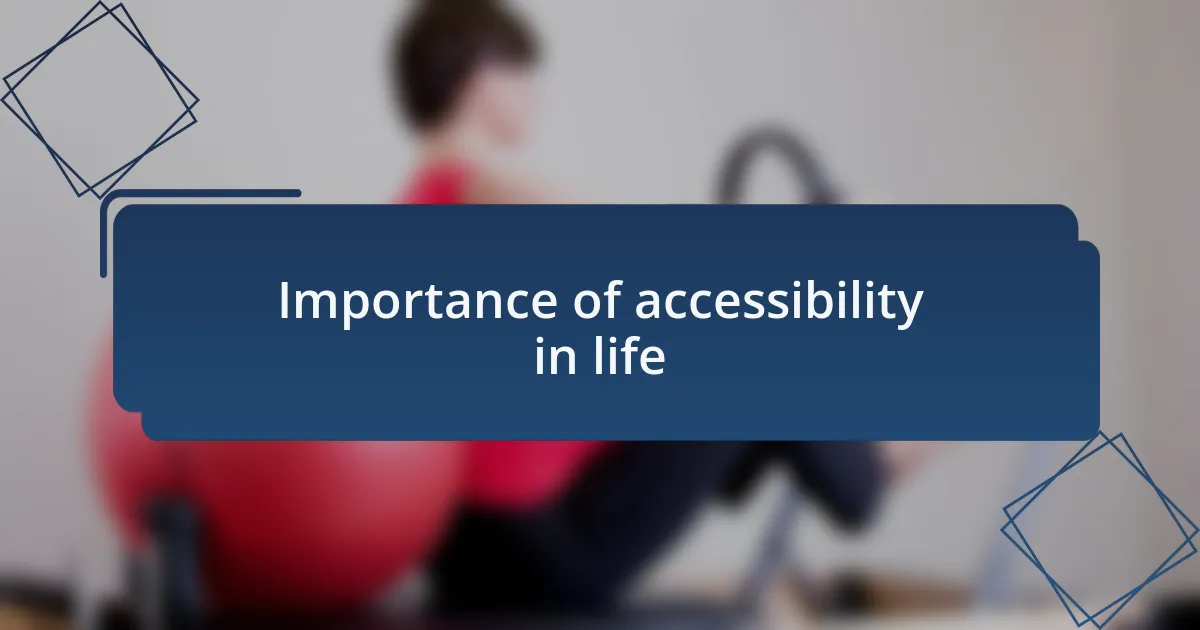
Importance of accessibility in life
Accessibility is a cornerstone of inclusion, impacting how individuals interact with their environment and society. I recall visiting a public space that had made thoughtful accommodations, like ramps and tactile pathways, allowing people like me to navigate easily. It really hit me then – these small changes dramatically affect the daily lives of many, transforming barriers into opportunities for engagement.
When I think about accessibility, I cannot help but focus on its role in nurturing independence. One time, a friend with mobility challenges shared how her life changed after a local organization installed automatic doorways in her apartment building. She felt empowered, able to come and go as she pleased, which made a world of difference both mentally and emotionally. Isn’t it powerful to consider how something as simple as a door can redefine someone’s experience of freedom?
Accessibility also opens the door for shared experiences. I often reflect on a community event designed with everyone in mind – from those with mobility issues to sensory needs. The joy and camaraderie that filled the atmosphere were palpable. It made me ponder, what if more spaces recognized the importance of these thoughtful designs? The answer is clear: when we prioritize accessibility, we enrich lives and cultivate a society where everyone has the chance to thrive.

Common accessibility barriers faced
Navigating websites can often feel like an uphill battle, especially when accessibility barriers come into play. For instance, I remember trying to book tickets online for a concert. The site relied heavily on small text and low-contrast colors, which made it incredibly tough for me to read. This experience is all too common for individuals with visual impairments, highlighting how crucial it is to design with everyone in mind.
Another barrier that stands out in my journey is the lack of keyboard navigation on many platforms. There was a time when I wanted to sign up for a workshop but quickly found that the site was nearly impossible to use without a mouse. What a frustrating realization! This challenge can severely limit participation for many people, reinforcing the need for developers to implement intuitive and inclusive navigation options.
Lastly, I’ve encountered issues with poorly designed alternative text for images. On one occasion, I stumbled upon a blog post that featured a picture intended to illustrate a key point but lacked any descriptive text. I felt disconnected from the content and was left asking myself, why isn’t this more of a priority? Ensuring that images are accompanied by accurate and engaging alternative text not only benefits those with visual impairments but enriches the experience for all users.
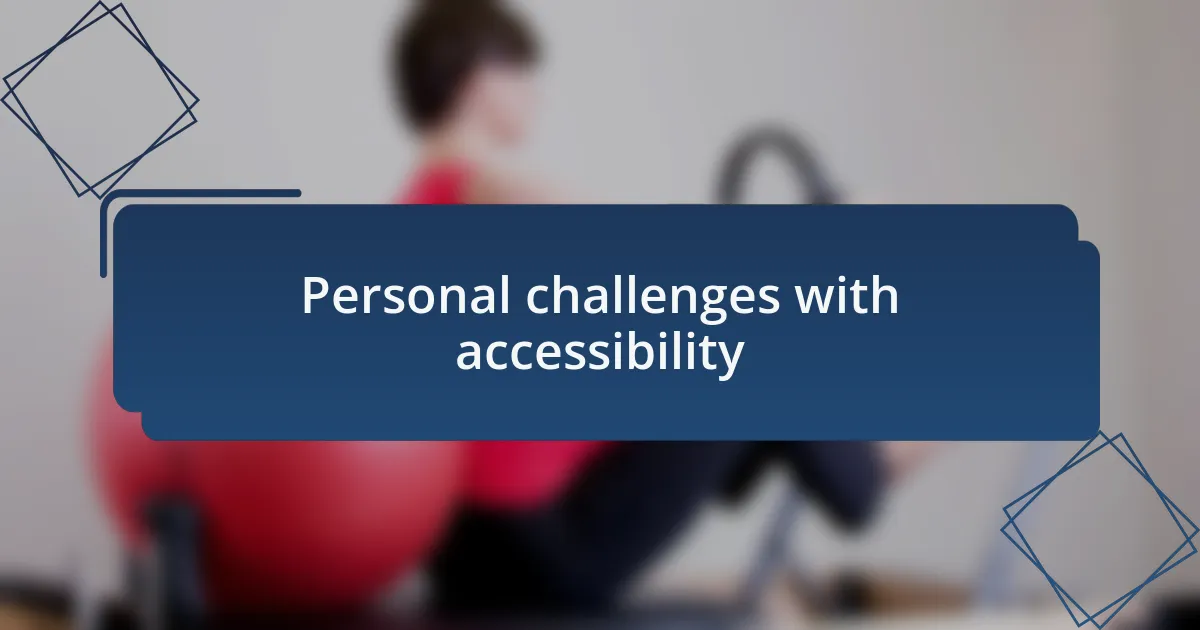
Personal challenges with accessibility
I often find myself grappling with the limited mobile accessibility on various websites. Once, while trying to buy a gift online, the site was so poorly optimized for mobile that I ended up feeling overwhelmed and frustrated. Why should something as simple as shopping online become such an arduous task? This lack of attention to mobile users often leaves me feeling excluded and disheartened.
Engagement can also be hindered by the tediousness of filling out forms that aren’t designed with accessibility in mind. I recall a time I had to register for a community event, and the form involved endless dropdown menus and tiny checkboxes. It was exhausting! Why aren’t developers considering our diverse needs when crafting these forms? The stress of navigating such hurdles can quickly overshadow the excitement of participation.
The absence of audio descriptions in video content is another persistent challenge for me. I’ve watched documents shared in webinars that lacked any spoken explanations for visuals, and it left me feeling detached from the valuable information being presented. Why is it that visual content often gets prioritized over auditory descriptions? This oversight not only diminishes my learning experience but also underscores the broader need for inclusivity in all forms of media.
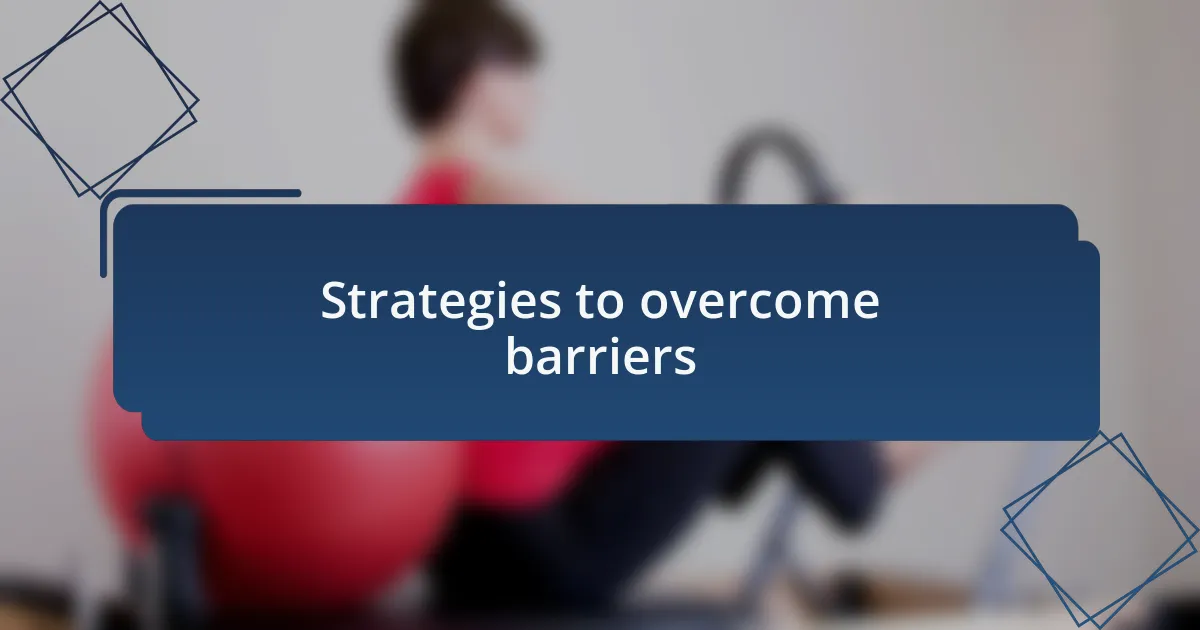
Strategies to overcome barriers
When it comes to overcoming accessibility barriers, I’ve found that advocating for inclusive design practices can make a significant impact. For instance, I once led a discussion with a local website developer about creating accessible forms. By sharing my own experiences, I highlighted the importance of clear labels and larger buttons, which ultimately influenced their approach to designing user-friendly interfaces. Isn’t it amazing how a simple conversation can spark meaningful change?
Adopting assistive technologies, like screen readers or voice recognition software, can also transform the browsing experience. I remember when I first started using a screen reader; it felt like unlocking a whole new world of information. Suddenly, I could navigate websites independently, which was liberating! Have you ever experienced such a breakthrough? Embracing these tools not only enhances accessibility but also empowers users to take control of their online experiences.
Collaboration with individuals who have firsthand experience with accessibility barriers is crucial to finding effective solutions. Once, I participated in a focus group where our feedback directly shaped the accessibility features of a new app. I felt valued, and it was inspiring to see developers actively seeking insight from users like me. Isn’t it essential for designers to understand our unique challenges in order to create truly inclusive experiences?
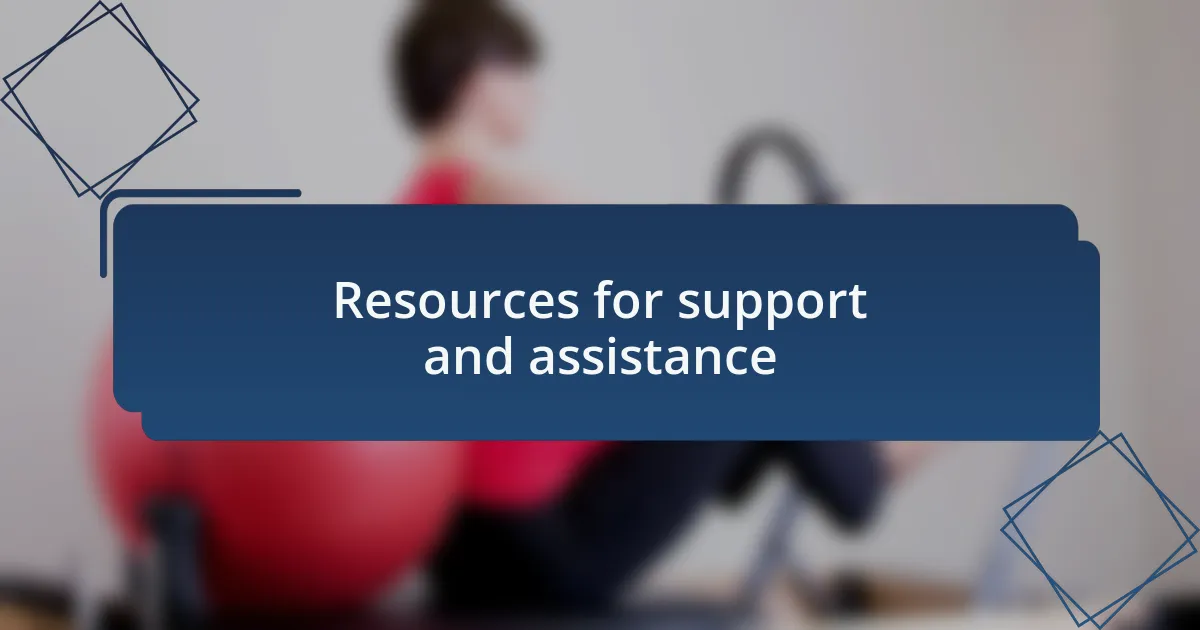
Resources for support and assistance
Finding the right resources for support can feel daunting, but I’ve realized there are some fantastic platforms out there. One that stands out to me is the Cerebral Palsy Foundation’s website, where I found not only information on therapies but also a community of people who share similar experiences. It’s comforting to know that I’m not alone in this journey; have you ever discovered a resource that truly resonated with you?
Another valuable resource I encountered is local advocacy groups that focus on accessibility rights. I attended a workshop where individuals with Cerebral Palsy shared their stories and strategies for accessing local services. Listening to others who have faced similar challenges was eye-opening and reinforced my belief that sharing our experiences amplifies our voices. Isn’t it empowering to be part of a movement that seeks to dismantle barriers?
Online forums can also be a treasure trove of information and emotional support. I vividly remember a late-night session spent scrolling through a forum dedicated to caregivers for those with disabilities. The raw honesty of the conversations—from triumphs to struggles—was incredibly validating. Have you ever felt a weight lift just by connecting with others who understand? It made me realize that while my journey is unique, there are countless others navigating similar paths.

Sharing my personal journey
As I reflect on my journey, I can’t help but recall the day I first ventured out with my new mobility aid. The excitement quickly turned into anxiety as I faced obstacles—a crowded café with no accessible entrance and uneven sidewalks that seemed to taunt me. Have you ever stepped out into the world only to feel the weight of the barriers before you? That moment made me realize how vital it is to share our stories—each setback fuels the fire for change.
There was a time when I felt overwhelmed by the constant need to advocate for myself. I remember attending a local community meeting where I bravely shared my experiences regarding accessibility issues. The support I received was astonishing, and hearing others voice similar struggles made me feel a sense of solidarity. Have you ever found strength in vulnerability? It was a powerful reminder that when we open up about our challenges, we can inspire one another.
One of the most memorable experiences was participating in an online campaign aimed at raising awareness about accessibility barriers. I shared a personal video of my daily challenges, and the response was far greater than I anticipated. People reached out, sharing their stories and thoughts, creating a ripple effect that showed just how far our voices can travel. Isn’t it incredible how sharing our journeys can connect us in ways we never imagined? Through this process, I learned that every story matters, and together we can advocate for a more inclusive world.